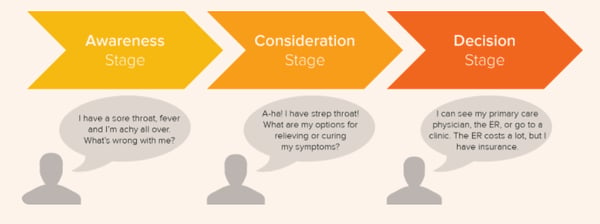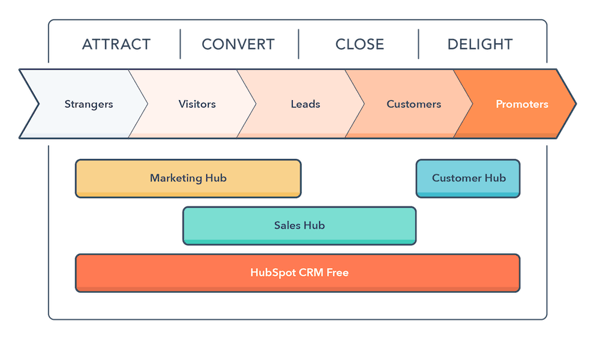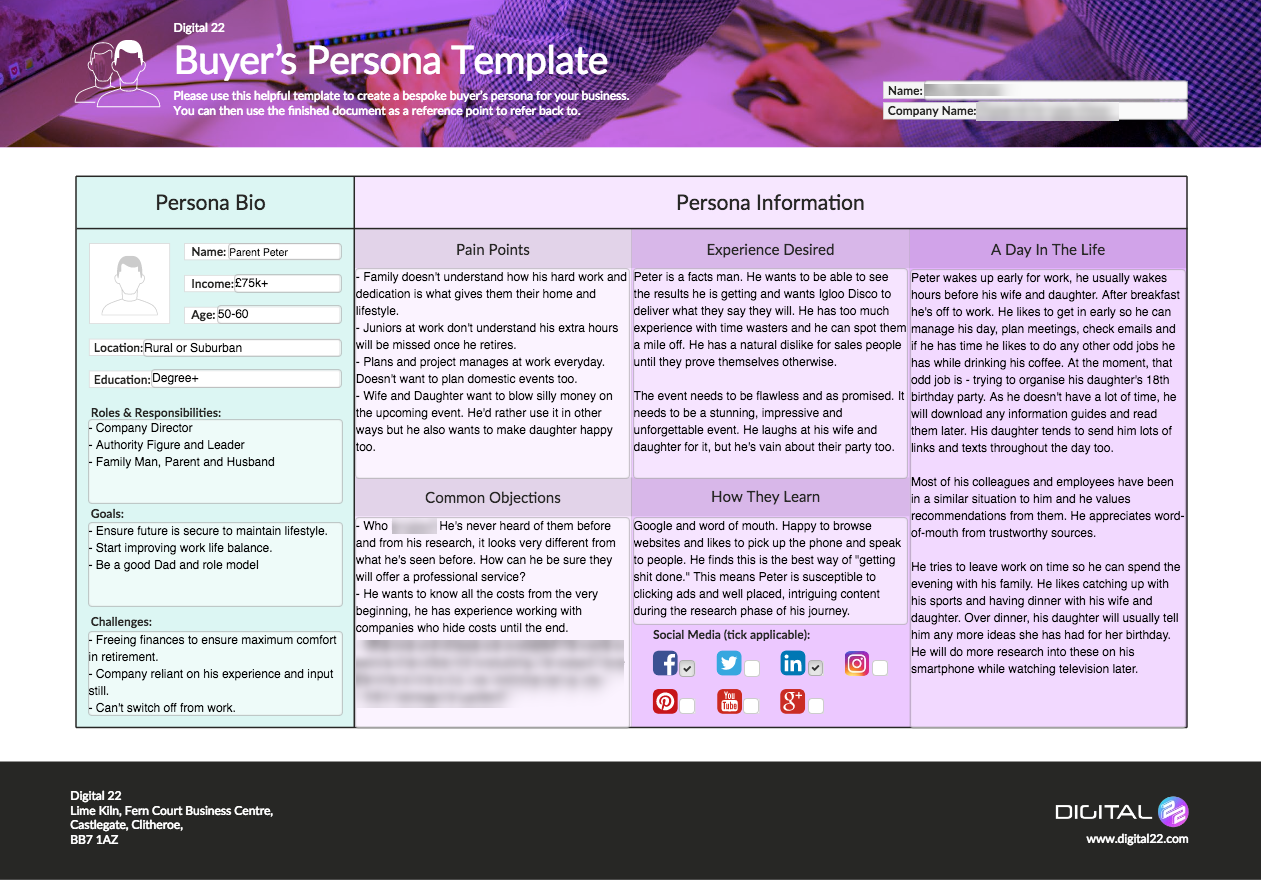Inbound marketing isn't a new thing, but it's certainly a great way to fill up your sales funnel and attract people to your brand. Here's how to nail inbound marketing in 2020.

Need a Recap on Inbound Marketing?
(If you don't, just click here.)
Inbound marketing is a strategy that collates many forms of pull marketing to create and boost brand awareness and sales. Instead of working to find customers, it focuses on earning the attention of customers instead of finding them directly. There are many more aspects to inbound marketing, which we cover in greater depth here.
Inbound vs Outbound
Unlike traditional outbound marketing, inbound tactics don't fight for the customer's attention because it attracts customers by providing them with relevant content at every stage of their buying journey. Think about every time you had a problem and turned to Google for a solution. The more research that you do, the more you find out about your problem and the possible solutions. As you do this, you move down the buyer's journey and the topics of content that might help you change.
This is where inbound marketing triumphs over outbound because it provides content that's designed to attract customers, like you in that scenario, at every stage of their journey. Whether it's someone who's just realised they had a problem (Awareness stage) or someone who knows which solution is best for them (Decision stage), there will be something that tries to help you solve your issue.
 The Buyers' Journey. Image credit
The Buyers' Journey. Image credit
Because the inbound methodology produces content that's valuable and helpful, it not only raises the likelihood of customers interacting with it, but it also allows you to attract the right people and builds trust and credibility for your business. It's the best way to turn strangers into customers and promoters of your business.
Inbound Marketing 2020 Tactics for Beginners
A focused inbound marketing strategy is a great way to improve the quality of your leads. But if you're new to the field, here's a run-through. For some of these points, we're going to assume you're using HubSpot as your CMS because, well, why wouldn't you?
Start with the Certifications
The HubSpot Academy is HubSpot's built-in learning centre - an online college, if you will. From blogging to design to coding, theory to practical, HubSpot Academy provides a series of online courses with exams at the end to help you get to grips with the inbound methodology.
And it's not just for beginners either - there are courses on more advanced topics to help even long-time marketers build on their existing skills.
It might seem tedious and feel like going back to school but the HubSpot Academy and the certifications are an important stepping stone in helping you enhance your marketing strategy.
Not only will they help you further understand strategies and best practices, but they'll also show you how to use HubSpot's marketing and CRM software - which is essential for newbies and helpful for veterans looking to find shortcuts and alternative methods.
Get a Basic Understanding of your Sales CRM & Actually Use It
Sales CRM software helps keep all of your data in one place so you can easily use it to optimise your future interactions with your potential and current customers. Why is this handy? Well, the inbound methodology is based on four stages: Attract, Convert, Close and Delight. These stages correspond to the different needs your customers develop as they pass through their Buyers' Journey and dictate what sort of content you should be providing them with.
 The needs of inbound marketing and the customer journey are entirely covered by HubSpot's software. Image credit
The needs of inbound marketing and the customer journey are entirely covered by HubSpot's software. Image credit
You can't expect one article to appeal to every single one of your customers. They're all different and might be at completely different stages in their Buyers' Journey to each other. Because your CRM has helpfully stored all of your data in one place, you can easily access it to make sense of every interaction you've had with your contacts and use that knowledge to successfully attract, convert, close and delight even more customers in the future.
But navigating through a sophisticated sales CRM software isn't always an easy task. Luckily, HubSpot Academy has a series of courses to help you and your sales team out. Make sure your sales team understand and are always using CRM. Setting up the right triggers and agreed lead qualification criteria will pay off in the long run.
Spend Longer Than You Think You Should on Personas
You already know why it's important to have buyer personas. Without them, how would you know where to begin in targeting your audience? But having them is one thing and actually knowing them is another. Do you really know your target audience inside and out?
That's why you and your internal team should spend time really getting to know your customers and crafting personas that capture their precise essence. This will help you curate content that tickles your audience's tastebuds and satisfies their pain point related needs and even help spawn multiple content ideas for the future.

Here's an example persona template which really helps you to understand the person you're speaking to. Always remember to speak to the person first and the job role second. You can also get hold of this free marketing persona template here.
Always Conduct Content Audits
Make sure you never forget to conduct content audits. It's important that your content is always relevant, interesting and valuable to your customers - otherwise, they'll stop engaging with your brand. When you're auditing, consider these questions:
- Is the content easy to read (in particular, scan-reading as the majority of people would read it on mobile and be in a hurry)?
- Does the tone match with your brand and your audience?
- Is the nomenclature clear and consistent?
- Does the content clearly communicate the key messages that you want to get across?
- Is the content engaging and interesting?
- Is the content laid out in a consistent structure that makes sense?
While you're doing your content audit, you might notice that some content might be better utilised as part of a topic cluster or internally linked to a landing page, for example. If so, make that change! That's what content audits are all about - to make your content better so it's always helping your inbound strategy excel.
The main aim of a content audit, however, is to make sure you are providing content for the entire buyer's journey. You need content which attracts visitors to your site, further advice which helps them consider their options and final stage content which helps them reach a decision on the solution.
Providing all that means somebody can potentially be taken all the way through the funnel using just your content. Consider how much likely they are to choose you as their supplier compared to somebody who only caters for one part of the journey (usually sales focused content).
To save you some time creating your own worksheet, we have created a content audit template as a part of our free downloadable inbound starter pack.
Re-calibrate Your Approach to Keywords
Every company wants to get onto the first page of the SERP but these days, it's not just about keyword stuffing and hoping for the best (not that you ever tried this!). As well as getting those keywords you want to target onto your page, you should also be focusing on various best practices such as tactical use of bullets/lists, bolding, anchor links and making the most of internal links.
Internally linked pages, such as pillar pages and using topic clusters for tracking performance, are a great and easy way to optimise your content for better results. Plus, they mean that your audience will potentially stay for longer on your website as they'll be clicking onto these internal links which will take them to other pages within your site that they might be interested in.
So before you dive right into the deep end and begin constructing a 20 page eBook, make sure you fully understand these sort of pages, their importance and how best to use them.
Get Even More Out of Your Marketing Efforts
Now that you understand inbound marketing a little bit more, you can begin to improve your existing strategy by having more meaningful customer interactions and boosting sales. But it doesn't end here. You need to make sure you're using the right marketing automation software. Download a FREE copy of our Marketing Automation Comparison Guide which compares the four most popular platforms so you can choose the one that's best for you and your business.
Real Growth. Real Impact.
'Should I use HubSpot?' 32 fundamental reasons why you should
21 cost-effective marketing campaigns you can create right now
Breeze: Everything you need to know about HubSpot's powerful AI
INBOUND 24 learnings and updates
Google Search API leaks: All you need to know [LIVE BLOG]
The top 6 marketing challenges of 2024
Inbound vs outbound marketing: What's the difference?
See why enterprises choose Avidly
Let’s build your HubSpot success story
Compelling final call to action - with accompanying link to Contact page





![Google Search API leaks: All you need to know [LIVE BLOG]](https://www.avidlyagency.com/hs-fs/hubfs/cloud.jpg?width=400&height=225&name=cloud.jpg)


